Market Data

April 30, 2019
BEA: First-Quarter GDP Exceeds Expectations
Written by Peter Wright
The growth of U.S. GDP in Q1 2019 increased to 3.2 percent and exceeded economists’ expectations.
On Friday, the Bureau of Economic Analysis (BEA) released the first estimate of GDP growth in the first quarter of 2019 stating: “Real gross domestic product (GDP) increased 3.2 percent in the first quarter of 2019, according to the ‘advance’ estimate. In the fourth quarter of 2018, real GDP increased 2.2 percent.”
![]()
GDP highlights from the BEA: “The increase in real GDP in the first quarter reflected positive contributions from personal consumption expenditures, private inventory investment, exports, state and local government spending, and nonresidential fixed investment. Imports, which are a subtraction in the calculation of GDP, decreased. These contributions were partly offset by a decrease in residential investment. The acceleration in real GDP growth in the first quarter reflected an upturn in state and local government spending, accelerations in private inventory investment and in exports, and a smaller decrease in residential investment. These movements were partly offset by decelerations in personal consumption expenditures and nonresidential fixed investment, and a downturn in federal government spending. Imports, which are a subtraction in the calculation of GDP, turned down.”
GDP is now measured and reported in chained 2012 dollars, and on an annualized basis in the fourth quarter totaled $18.912 trillion. The growth calculation is misleading because it takes the quarter-over-quarter change and multiplies by 4 to get an annualized rate. This makes the high quarters higher and the low quarters lower. Figure 1 clearly shows this effect. The blue line is the trailing 12-months growth and the black line is the headline quarterly result. This latest data is one of the few times these measures coincide. On a trailing 12-month basis, GDP was up by 3.21 percent in Q1, which was the best result since Q2 2015. To put that result into perspective, the average in 37 quarters since Q1 2010 has been 2.27 percent. The blue line in Figure 1 shows the slow but steady progress of the trailing 12-month result since Q2 2016.
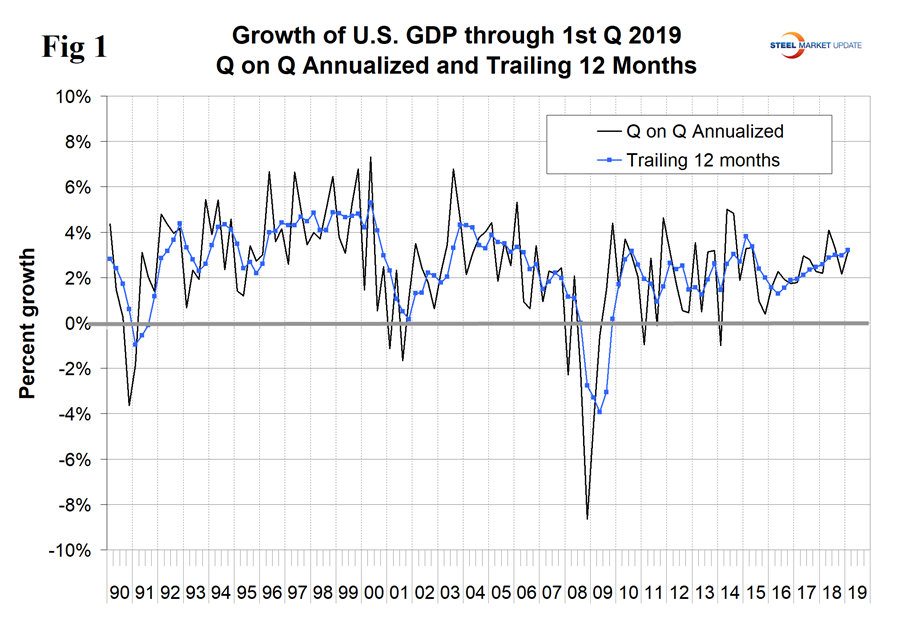
Figure 2 shows the headline quarterly results since 1990 and the January 2019 Congressional Budget Office forecast through 2022. The CBO underestimated the growth rate in Q1 2019 and expects the boost from the tax break to decline by Q3 2019.
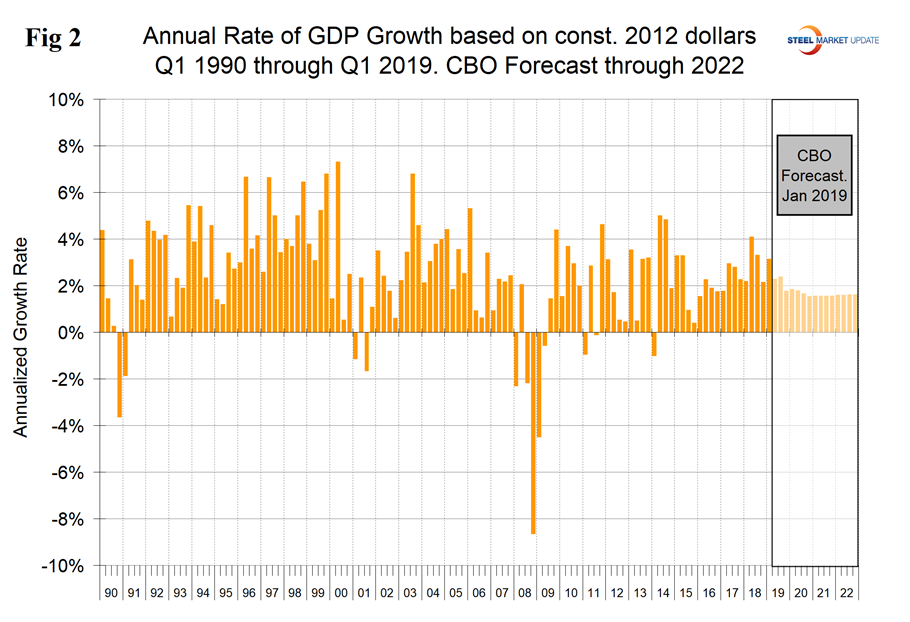
The mix of the six major contributory components in the final GDP growth calculation is shown in Figure 3. Normally, personal consumption is the dominant growth driver, but this was not the case in the first quarter when this contribution was 0.82 percent, down from 2.57 percent in Q2 last year. Personal consumption includes goods and services, the goods portion of which includes both durables and non-durables. The first quarter result was made good by the positive contribution of net exports, which added 1.03 percent to the total. This was the best contribution of net exports since Q4 2013. Inventories also made a positive contribution of 0.65 percent. Rising inventories are entered as a positive in the GDP calculation. Note that in the definitions at the end of this piece, inventories are not mentioned. Over the long run, inventory changes are a wash and simply move the reported growth from one period to another. On April 26, Economy.com wrote: “While the recovery is encouraging, it will be only partial. The economy will not revert back to the pace experienced in the middle quarters of last year, when the stimulus from the deficit-financed tax cuts was at its apex. As the stimulus has faded, so too has growth.”
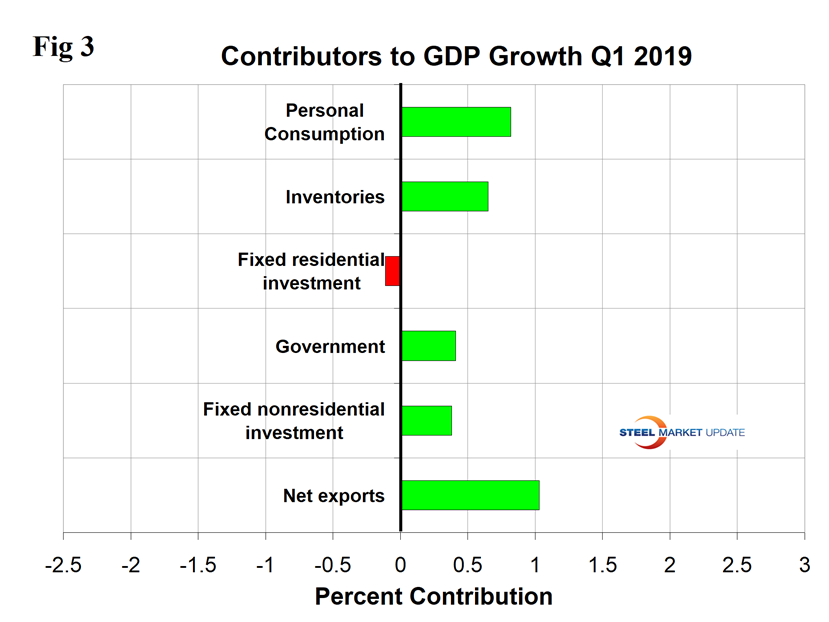
Figure 4 shows the contributions of residential and nonresidential investment. After the recession, nonresidential investment bounced back, but residential did not and has had less than a 1 percent variation since Q3 2010. After a disappointing result in Q3 2018, nonresidential bounced back in Q4 when it made a 0.73 percent contribution before reverting to 0.38 percent in Q1 2019. The contribution of government expenditures was 0.41 percent in the first quarter.
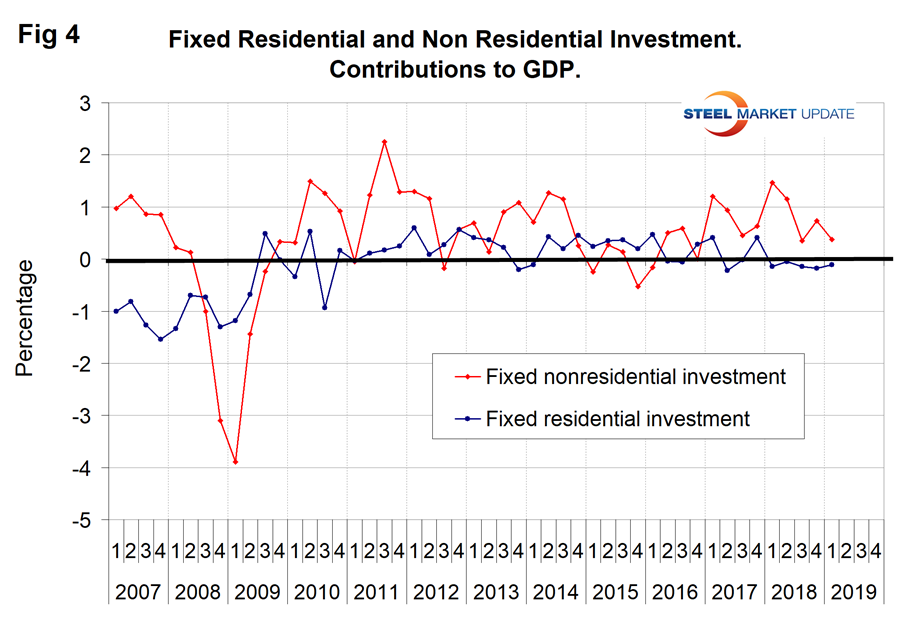
Figure 5 shows the quarterly contributors of the six major subcomponents of GDP since Q1 2007. This chart clearly shows the whipsaw effect of inventory changes, which are coded pale blue.
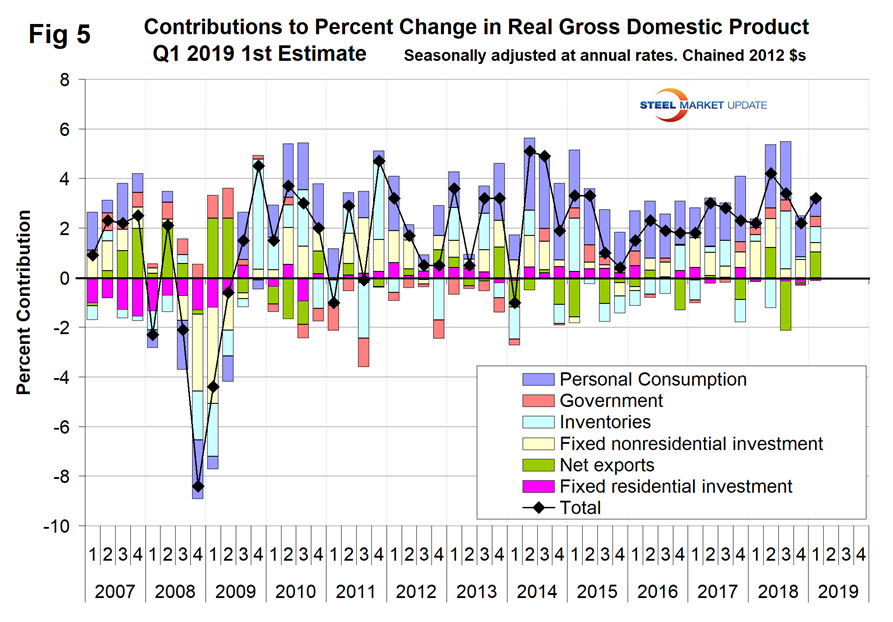
Figure 6 shows the breakdown of the $18.8 trillion economy.
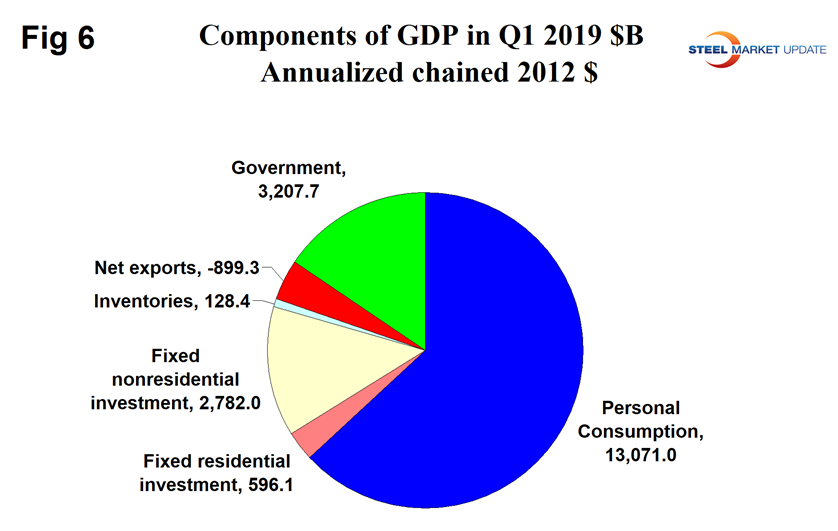
SMU Comment: The trailing 12-month growth rate has improved steadily since Q2 2016. On this basis, which we think is the best way to look at the data, Q1 2019 was the highest result since Q2 2015. The bad news is that personal consumption expenditures made their second lowest contribution since Q2 2013. The latest result was juiced by the contributions of net exports and an increase in inventories.
The CBO estimates that the partial shutdown delayed $18 billion in federal spending and suspended some federal services, thus lowering the projected level of real GDP in the first quarter of 2019 by $8 billion (in 2019 dollars), or 0.2 percent.
Definition of GDP: Gross domestic product (GDP) is the value of the goods and services produced by the nation’s economy less the value of the goods and services used up in production.
GDP is defined as Consumption (C) plus Investment (I) plus Government Spending (G) plus [Exports (E) minus Imports (I)] or: GDP = C + I + G + (E-I)
This equation is known as an identity. An identity is an equality that remains true regardless of the values of any variables that appear within it. That means it is not a guess or an approximation. It is simple reality.
National savings is GDP minus (consumption plus government spending). That means that investment equals savings plus net exports. If there are no net exports, then money must come back into the U.S. from outside the country to finance investments, along with savings.
Thus, if there is a government deficit, there must be savings by both consumers and businesses, plus capital flows from outside the country, to offset that deficit in order for there to be any money left over for investments.
Another definition of GDP states that it equals the growth in working population multiplied by their productivity.







